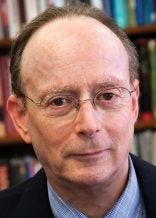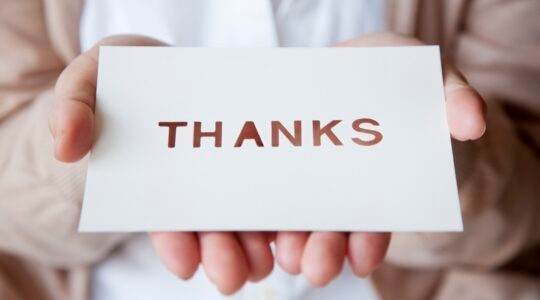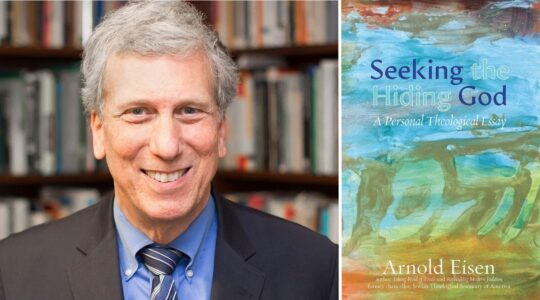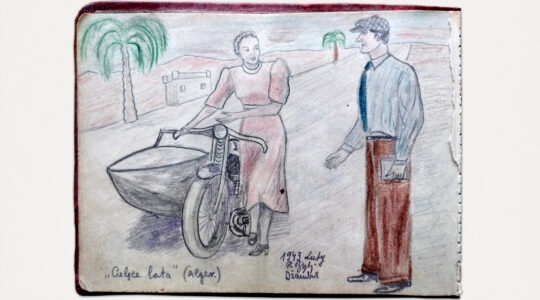Phoenix — Doing a book tour is an enlightening, enriching, though often humbling, experience. My sporadic travels over the last six months, courtesy of a Jewish Book Council program encouraging communities to host Jewish authors, have given me new insights into how Jewish life plays out around the country, marked by both great contrasts and strong similarities.
One of the comic low points for me in my dozen or so talks so far at JCCs, synagogues and book fairs around the country, discussing “Between The Lines,” a collection of some of my Jewish Week columns, came when I spoke at the Tenafly (N.J.) JCC one week night last fall. The turnout was small, and at the end of the evening an older woman was one of a handful of people who purchased my book. (All proceeds, by the way, go to The Jewish Week, which published it.) She asked me to sign it for her, and when I asked her how I should make it out, she looked at me as if I was a half-wit, and said slowly, “How about signing your name?”
By contrast, the presentation I gave Feb. 1 in Albuquerque, N.M., at an all-day Jewish educational, social and cultural program called “A Taste Of Honey,” drew more than 150 people, quite a feat for a Jewish community that numbers under 25,000 for the entire state, according to officials there.
Carolyn Hessel, the outgoing director of the book council, had encouraged me to accept the local JCC’s offer to speak in Albuquerque, noting that the community was “small but appreciative,” and she was right. (One welcome sign was that all 40 copies of my book there were sold, a high for me on the tour that has included lows in the single digits. Like I said, book tours can be humbling.)
On a clear, sunny day, with snow-capped mountains only a 10-minute drive from the JCC, about 200 people came from hundreds of miles away to hear talks on a variety of subjects from Jewish liturgy to the music of Irving Berlin, with a special emphasis on crypto-Jews and conversos, often described as “hidden Jews” whose ancestors were forced by the Inquisition to convert to Catholicism.
New Mexico is believed to have a significant number of crypto-Jews, and the day after the program I met with a local woman who tearfully described the emotional pain she has endured, being cut off from most of her family for identifying as a Jew. She asked me not to use her name for fear of further alienating herself from her Catholic-practicing relatives, but encouraged me to explore the topic, insisting that there are many people like her who seek acceptance in and understanding from the Jewish community.
On Sunday I was one of dozens of presenters at LimmudAZ, an inaugural event for the Phoenix Jewish community and neighboring cities. Held on the campus of Arizona State University in Tempe, the daylong program fostered the spirit and goals of Limmud, a volunteer-based, pluralistic, international network that promotes Jewish life and learning. To the delight of its organizers, it attracted more than 400 enthusiastic participants.
In addition to the over-50 crowd, which makes up the majority of audiences at Jewish book events around the country, there were a number of students from ASU. Four Hillel interns discussed their efforts to counter anti-Israel activity on campus, which is considered “moderately active.” Hillel approach, they explained, is to sponsor proactive, pro-Israel programs rather than react directly to pro-Palestinian campaigns.
Last summer I spoke at the Modern Orthodox synagogue in West Hampton, L.I., and the Reform congregation in East Hampton. Despite their theological differences, the issues raised were quite similar. Since my talks touched on the challenges of a Jewish journalist to be both a loyal member of the community and an independent and sometimes critical voice, there were thoughtful questions and comments that reflected the deteriorating relationship between President Obama and Israeli Prime Minister Netanyahu.
Those anxieties about the U.S.-Israel bond, once deemed unshakeable, seemed only to deepen in the ensuing months, regardless of where I visited, from Hoboken to Houston. I tried to explain that Israelis have two major concerns that are at odds these days: One is a deep desire for Israel to be on good terms with the White House, and the other is the need to feel that the Jewish state is secure against external threats.
I found it refreshing to get away from New York and remember the challenge of sustaining and deepening Jewish life in places where Jews are not necessarily a strong presence. When I spoke at the United Synagogue of Hoboken, a revitalized congregation, more than a century old, housed in a beautifully restored historic building, only a few miles from Manhattan, I saw how congregants volunteered their time and talents to help make the synagogue relevant. And during my brief visit to Houston I understood why its annual Jewish book fair is considered one of the best in the country in terms of size, content and professionalism.
Support the New York Jewish Week
Our nonprofit newsroom depends on readers like you. Make a donation now to support independent Jewish journalism in New York.
On my Southwest swing I spoke Monday night at Valley Beit Midrash in Phoenix, an innovative adult Jewish education program headed by the talented and dynamic Rabbi Shmuly Yanklowitz, who is seeking to infuse new energy into the community. It’s an uphill battle there and in so many other cities where there are distinct divides in Jewish communal life related to age and denominational divisions. Those who turn out for local Jewish activities tend to be older people, and there is little shared activity between Orthodox and religiously liberal adherents.
Having visited Sedona, the high-desert Arizona town best known for its breathtaking red-rock landscapes and its appeal to spiritual seekers, I learned that many people believe the area has powerful energy vortexes. These are specific sites that bubble up from the earth and can have a positive impact on an individual’s inner well-being, according to believers.
One could make the case that programs like those in Albuquerque and Phoenix mentioned here — and like those in so many other places far removed from New York — could be thought of as Jewish vortexes, sources of renewal that can bubble up and inspire those that seek them out. May they flourish and grow — and I hope to learn more about them on future travels.
The New York Jewish Week brings you the stories behind the headlines, keeping you connected to Jewish life in New York. Help sustain the reporting you trust by donating today.





